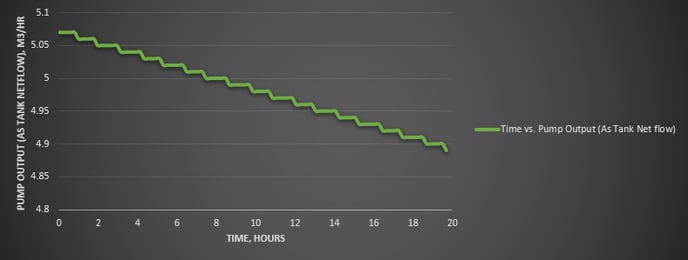No, it is designed for steady-state analysis
FluidFlow is mainly used for building steady-state hydraulic models, but can be used for simulating simple transient systems. The scripting module of FluidFlow can be used to develop simple dynamic models. However, using the scripting module requires some familiarity with Pascal or BASIC programming. You may check our Scripting Handbook for additional guidance.
Moreover, the Multi Calc feature of FluidFlow can be used to model and investigate simple dynamic behavior of fluid systems. With some additional calculations that you can make using worksheets, this might be something of interest to you.
Using the sketch and pump performance curve below, we’ll demonstrate how FluidFlow can be used to simulate a tank filling event:
For the given system, a certain centrifugal pump with performance data shown in the table from a very large reservoir (hence can assume the level decrease is negligible to none) to a vessel located 20 meters above. The cylindrical vessel with 5 meters diameter has liquid full capacity of 5 meters.
By developing the hydraulic model and through the multicalc feature, we were able to obtain incremental data for the change in flow rate as the liquid level at the vessel varied from zero (0) to five (5) meters (liquid full capacity) split into 100 increments. From the incremental data, the incremental time required for the vessel inventory to change from V1 to V2 can be approximated using the average flow rate obtained in the multicalc result.
The approximated time to reach from V1 to V2 can then be summed up to determine the total filling time for the vessel from zero to liquid full and give rise to the following chart below:

Moreover, the decrease in pump output as resistance increases due to vessel liquid level increase over time can also be determined using the calculated net flow on the reservoir which represents our vessel:

For further guidance on the Multi Calc function, click here.
Note that the approach shown above is applicable only when only one (1) of the boundaries experience level/volume change and the other is held constant.